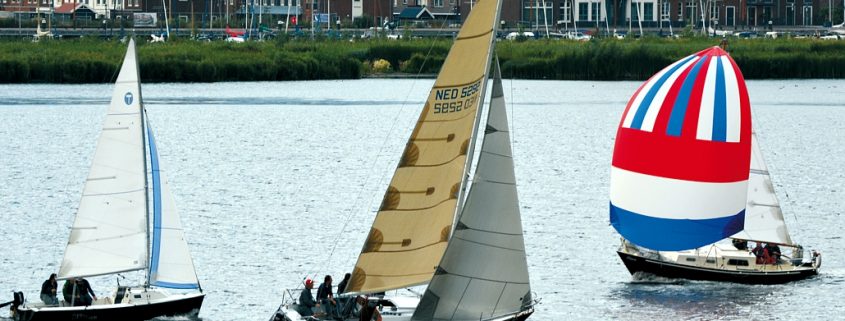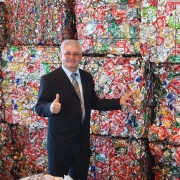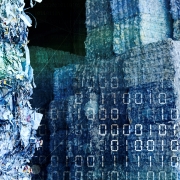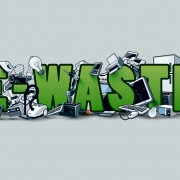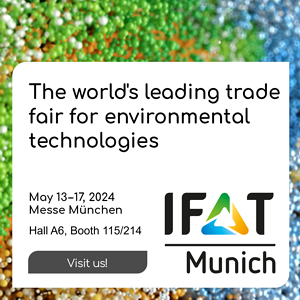All Sails Set – The Netherlands are Heading Towards a Circular Economy
Thirty years ago, the Netherlands suffered from a lack of landfill capacity and insufficient thermal treatment capacity. This urged a change in waste management policy: The amount of landfilled waste decreased from 35 percent in 1985 to 2.3 percent in 2010. The rate of recovery including waste-to-energy rose from 50 percent to 88 percent. Currently 79 percent of the Dutch waste is recycled; the residual waste is mainly used for energy production, according to Rijkswaterstaat at the Ministry of Infrastructure and the Environment.
This must be differentiated. The landfilling rate has decreased by introducing a landfill tax in 1995 and sharp tax increases in 2002 and 2010, that made it the highest in Europe. In 2012 landfilling reached such a low level that the government repealed the tax being administratively bothersome. For consistancy, the amount of waste rose again and led to to a new waste disposal tax in April 2014. Following the inter-trade organization Vereiniging Afvalbedrijven, an alternative is sought-after that brings in 100 million Euro per year, is environmentally friendly and avoids unfair market competition. Meanwhile, 22 landfills are active; 75 percent of the remaining capacity for landfill is in public hands.
As the European Environment Agency pointed out, recycling is the most preferred option for MSW management in the Netherlands. Already lying at 45 percent in 2001, it reached the 50 percent recycling target by 2009, eleven years ahead of the deadline. Official figures published by four ministries in September 2016 indicate that the recycling of plastic packaging has almost doubled in six years’ time. The Dutch clothing giant G-Star Raw developed a clothing line made from different types of threads, containing 33 percent to 61 percent of recycled plastic. In 2014 paper and cardboard is already recycled by 82 percent; for metals, the level is even 94 percent. All in all, the quota of recycled household waste is mediocre, compared to European average. But the second National Waste Management Plan introduced a target to increase the recycling of household waste to 60 percent by 2015.
The leading waste importer
Germany Trade & Invest underlines the Netherland`s proportionally high ratio of 31 percent of incinerated municipal waste. Twelve waste-to-enery plants – 60 percent of the incineration capacity is in public hands – are online providing for 18 percent of energy from renewable resources. Although since March 2010 plants with R1-Status are allowed to shredder residues thermically instead of depositing them, the becoming of overcapacities especially in the beforementioned twelve plants led to increasing waste imports. To speak with the words of the “Het Financieele Dagblad“ newspaper, the Netherlands developed to the leading waste importer in a short period and outran Schweden and Danmark. In 2012 the country took about one billion tons of waste to use as energy from abroad, mainly Ireland, the UK and increasingly Italy – 14 percent of the total national volume. According to Vereiniging Afvalbedrijven director Dick Hoogendoorn, this could rise to nearly 17 percent in the next few years. But the branch also feared that the tax, imposed on the disposal and incineration of waste in April 2014, could lead to waste exports benefiting firms from neighbourhood countries. If no tax would be imposed on the export of waste, this could in the long run lead to estimated 2.2 million tons exported abroad, affecting 35 percent of the total amount of domestic waste available for incineration.
Waste market dominated by private ventures
According to Germany Trade & Invest, regulated by law disposal and recovery of municipal waste falls to communities and is seldom organized by Public-Private-Partnerships. The waste and recycling market in the Netherlands is dominated by private firms – an ongoing trend. The statistic bureau CBS stated 785 companies engaged in the treatment and recycling of solid and liquid waste in January 2014, mostly little and medium-sized, among them more than 155 metal recyclers, 60 plastics recycling businesses, 130 waste management service providers and 30 firms active in the waste-to-energy sector. The greatest actors in the market are van Gansewinkel, Shanks, Sita, Indaver, Attero und HVC, standing for about 40 percent of the total turnover.
However, the organization of waste treatment cannot be described in a few words. Wilma Mansveld, State Secretary of the Environment, tried a brief outline: “Currently, 75 percent of the remaining capacity for landfill and 60 percent of the incineration capacity is in public hands. The City of Amsterdam, for instance, has its own incineration plant. Others are owned by groups of municipalities – like HVC, which is owned by 48 municipalities and 6 water authorities. Provincial authorities are the main shareholders of companies like Attero.“ Investments from abroad must not be forgotten: In July 2016, the Japanese Mitsubishi Materials Corporation for example started to invest 30.8 million Euros in an e-scrap sampling center named MM Metal Recycling B.V. at the Port of Moerdijk, that is expected to become operational in 2017.
A circular economy by 2050
Regardless of the current industrial structure, the central target of waste treatment in the Netherlands ist clear: a circular economy by 2050. In September 2016 the government launched a comprehensive program for a “national raw materials agreement“. Minister Sharon Dijksma (Infrastructure and the Environment) and Minister Henk Kamp (Economic Affairs) made agreements with the Dutch business community, government authorities, and NGOs aiming at realizing a one hundred percent circular economy. The Dutch Cabinet declared its intention to sit down with the three largest banks – ABN-AMRO, Rabobank, and ING – that have already stated their willingness to support investments in circular projects. The Cabinet intended to take decisions in the current cabinet term to further stimulate investments by supporting private sector initiatives and entrepreneurs with developing revenue models.
Further financial opportunities are provided by European structural funds and the European Fund for Structural Investments (the so-called Juncker fund). Sharon Dijksma announced the availability of 27 million Euro to – inter alia – make it easier for the 7,000 primary schools in the Netherlands to separate their waste. And the Ministries of Environment, Interior, Public and Foreign Affairs published a Government-wide Program with three strategic goals: high-quality utilization of raw materials in existing supply chains; replacement of fossil-based, critical and non-sustainably produced materials by new sustainably produced, renewable, and generally available raw materials; and development of new production methods, new design products, differently organized areas as well as newly promoted ways of consumption.
An extra turnover of 7.3 billion Euro per year
The paper makes clear, that financing this program means investments in circular products and services with a special character, as they have “a different risk profile, different depreciation periods, and a different cost-benefit balance from linear products“. Besides that, little is known about circular business models. Nevertheless, the Netherlands Foreign Investment Agency – citing the Netherlands Organisation for Applied Scientific Research – expects the forthcoming circular economy to generate an extra turnover of 7.3 billion Euro per year, accounting for 54,000 jobs, and calculates a reduction of material amounting to 100,000 kilotons. The Rabobank is quoted with an estimation of an extra growth in GDP ranging from 1.5 billion Euro in a business-as-usual scenario to 8.4 billion Euro in the most circular economic scenario.
More than that, in an open letter the Ministry of Infrastructure and Environment wanted the Cabinet “to contribute to creating the proper international conditions“ for the transition to a circular economy. Towards this end, a platform called Holland Circular Hotspot should be set up. Within this platform, the Cabinet could invest in international partnerships and also take the initiative of concluding more international Green Deals and covenants.
Benefiting climate, income and jobs
If programs, proposals and investments would be realized one day in the distance, the dreams of Minister Kamp could come true: “The ambition of the Cabinet is to adopt a more effective, smarter, and more profitable approach to the utilization of scarce raw materials and residual flows, together with the business community, knowledge institutes, and government authorities. Thus we are building a circular economy that will not only benefit our climate, but also generate income and jobs.“
Photo: pixabay
GR 12017

